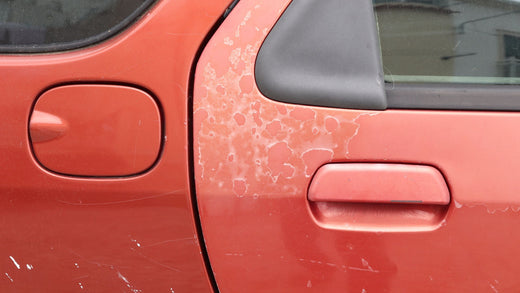
Your car's paint does more than just make it look good; it acts as a vital shield against environmental assaults. Yet, despite its importance, the vibrant finish can degrade over time due to the relentless sun, pollutants, and general wear and tear. This not only affects your vehicle’s aesthetic appeal but also its overall value. In this blog, we'll explore several proactive measures you can take to protect your car’s paint from fading, ensuring it stays as fresh and radiant as the day you drove it off the lot.
Understanding the Causes of Paint Fading
Before delving into protection methods, it’s crucial to understand what causes car paint to fade. The primary culprits include ultraviolet (UV) rays, pollutants, harsh cleaning chemicals, and physical abrasion. Prolonged exposure to the sun’s UV rays can break down the chemical bonds in the paint, leading to oxidation and fading. Acid rain, bird droppings, tree sap, and industrial fallout can all damage the paint if not promptly cleaned. Some cleaning products are too abrasive or contain harsh chemicals that can strip away the paint’s protective layers. Regular wear and tear, including scratches, dings, and improper washing techniques, can erode the paint over time.
Regular Washing and Drying
Regular washing is fundamental to maintaining your car’s paint. Dirt, dust, and pollutants can accumulate on the surface, causing scratches and dulling the paint. To wash your car properly, use a high-quality, pH-balanced car wash soap and avoid household detergents, which can be too harsh. A microfiber wash mitt will help prevent scratches, and drying the car with a clean, soft microfiber towel will avoid water spots. Washing your car at least once every two weeks, or more frequently if it’s exposed to harsh conditions, is advisable.
Applying Wax and Sealants
Waxing your car creates a protective barrier against UV rays, pollutants, and moisture. It also enhances the car’s shine. Carnauba wax offers excellent shine but needs frequent reapplication, while synthetic waxes (sealants) last longer and provide robust protection. Applying wax every three months is a good routine. Ensure the car is clean and dry before application, and use a foam applicator pad to spread the wax in circular motions. Buff it off with a microfiber towel once it hazes. For best results, wax your car in the shade to prevent the product from drying too quickly.
Parking in the Shade or Using Car Covers
Parking your car in a garage or under a carport provides significant protection against UV rays and environmental pollutants. If indoor parking is not an option, consider using a high-quality car cover. This will shield your vehicle from the elements, including sun, rain, snow, and dust. Opt for a breathable cover to prevent moisture buildup, which can lead to mold and mildew.
Paint Protection Films and Ceramic Coatings
Investing in a paint protection film (PPF) or ceramic coating can offer long-term defense against fading. PPF is a transparent, thin layer of urethane that is applied to the car’s surface. It provides excellent protection against chips, scratches, and UV rays. Ceramic coatings are liquid polymers that chemically bond with the car’s paint, creating a durable, hydrophobic layer. This layer not only protects against UV rays and minor abrasions but also makes the car easier to clean by repelling water and dirt. Both options are more expensive than waxing but offer superior and longer-lasting protection.
Using Sunshades and UV Protectant Sprays
Using sunshades and UV protectant sprays can also help safeguard your car’s paint. Sunshades are particularly useful for protecting the interior surfaces from UV damage but also contribute to keeping the overall temperature of the car lower, which can reduce the strain on the exterior paint. UV protectant sprays can be applied to the car’s paint to provide an additional layer of defense against harmful rays. These sprays are easy to use and can be reapplied as needed to maintain their effectiveness.
Proper Washing Techniques
When washing your car, be mindful of the tools and products you use. Avoid automatic car washes that use brushes, as they can cause micro-scratches and swirls in the paint. Instead, opt for touchless car washes or hand-wash your car using the two-bucket method. This method involves using one bucket for soapy water and another for rinsing your mitt, reducing the chances of dirt particles scratching the paint.
To read more about how to wash your car at home, check out our blog post here.
Prompt Removal of Contaminants
Bird droppings, tree sap, and other contaminants can be particularly harmful to your car’s paint. These substances are acidic and can cause permanent damage if not removed promptly. Keep a detailing spray and microfiber cloth in your car to clean off any contaminants as soon as you notice them. This quick action can prevent long-term damage and keep your paint looking fresh.
Addressing Minor Scratches and Chips
Maintaining your car’s paint also involves taking care of minor scratches and chips as soon as they appear. Small imperfections can lead to bigger problems if left untreated, as they expose the underlying metal to the elements, increasing the risk of rust. Use touch-up paint to cover any chips or scratches, and consider using a scratch remover for minor surface imperfections. Regular inspections and prompt repairs will keep your paint in top condition.
Bright Today, Bright Tomorrow: Safeguarding Your Paint
Protecting your car’s paint from fading involves a combination of regular maintenance, proper cleaning techniques, and the use of protective products. Regular washing and waxing are essential to remove dirt and contaminants and provide a protective barrier. Parking in shaded areas or using a car cover can shield your car from UV rays and pollutants. For more robust protection, consider investing in paint protection film or ceramic coatings. Additionally, using sunshades, and UV protectant sprays, and promptly addressing minor damages will help maintain the integrity and appearance of your car’s paint. By following these steps, you can ensure that your car’s paint remains vibrant and well-protected for years to come.



